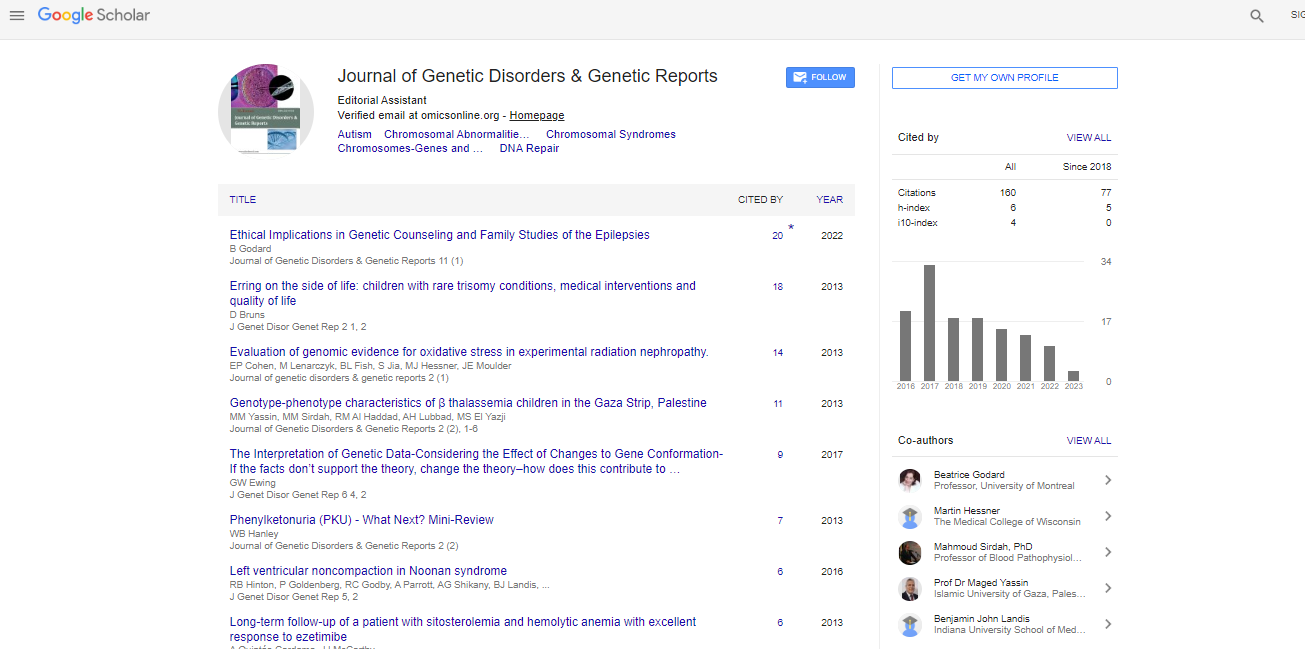Research Article, J Genet Disor Genet Rep Vol: 6 Issue: 2
A Rare Case of Isodicentric Xq28 that Causes Mental Retardation: Molecular Characterization and Review
Gonzalez C1*, Gutierrez M1, Ruiz M2, Huete B2, Gonzalez S3, Gallego J4 and Cava F1
1H.I. Sofia, Genetic Department, Sebastian de los Reyes Madrid, Spain
2Department of Pediatrics, Av. 9 de Junio, 2, 28981, Parla, Madrid, Spain
3ICM lab, Rúa María Barbeito, 61, Lugo, Spain
4Jiménez Díaz Foundation, Department of Genetics, Av. Reyes Católicos, 2, 28040, Madrid, Spain
*Corresponding Author : Cristina González
H.I. Sofia, Genetic Department, Sebastian de los Reyes Madrid, Spain
Tel: 0034914842324
E-mail: cgonzalez@brsalud.es
Received: April 18, 2017 Accepted: June 24, 2017 Published: June 30, 2017
Citation: Gonzalez C, Gutierrez M, Ruiz M, Huete B, Gonzalez S, et al. (2017) A Rare Case of Isodicentric Xq28 that Causes Mental Retardation: Molecular Characterization and Review. J Genet Disor Genet Rep 6:2.doi: 10.4172/2327-5790.1000154
Abstract
Study background: Isodicentric X chromosome is a rare structural abnormality in which the arms of the chromosome are mirror images of each other with two centromeres. Little description is available about characterization or phenotype-genotype association in isodicentric Xq28. While some of the females are normal, most only present premature ovarian failure or amenorrhea, but mental retardation is not usually reported.
Methods: We present a study of cytogenetic and molecular characterization of an isodicentric Xq28 found in a development retarded girl with dysmorphic features. G and C banding, CGH array and Bisulfite Methylation techniques were used.
Results: The study showed an almost total trisomy of X chromosome (Xper->Xq28) with a 1.10 Mb deletion in Xq28:qter, with two centromeres and a total skewed inactivation of one X chromosome. The deletion in Xq28 in this patient includes genes that are implicated in X-linked mental retardation and autism spectrum disorder.
Conclusion: Molecular studies help to elucidate genes that are implicated to understand the phenotype. The mental retardation and dysmorphic features in our patient can be attributed to the affected genes, their regulation and tissue expression. Although mental retardation is not usually reported this possibility has to be taken into account inorder to suggest a genetic counselling in prenatal diagnosis and de novo findings. Literature on isodicentric X chromosomes with various breakpoints on Xq is reviewed and summarized in this report.
 Spanish
Spanish  Chinese
Chinese  Russian
Russian  German
German  French
French  Japanese
Japanese  Portuguese
Portuguese  Hindi
Hindi 



